Definition of learning strategies pdf
Active Learning Active learning is generally defined as any instructional method that engages students in the learning process. In short, active learning requires students to do meaningful learning activities and think about what they are doing. While this definition could include traditional activities
Rigney’s definition of language learning strategies as “operations employed by the learner to aid the acquisition, storage, retrieval, and use of information” (Oxford, 1990, p.8) as a base.
Learning strategies are essential in a curriculum . By learning strategies I mean any action which you may have to take to solve a problem in learning, to help you make the most of your learning process, to speed up and optimize your cognitive, affective or social behaviour. To give an example, I will put the reader of this paper in a testing
© 2013 School Drug Education and Road Aware FOUNDATION Teaching and Learning Strategies 161 The interactive teaching and learning strategies described in this section are used to engage students in the resilience and wellbeing, drug education and road safety content included in each focus areas of this resource.
Language learning strategies is a term referring to the processes and actions that are consciously deployed by language learners to help them to learn or use a language more effectively. They have also been defined as ‘thoughts and actions, consciously chosen and operationalized by language learners, to assist them in carrying out a multiplicity of tasks from the very outset of learning to
Learning and development Annual survey report 2015 Contents Foreword 2 Summary of key findings 3 1 The role and purpose of learning and development (L&D) 6 2 Trends in L&D practices and methods 9 3 Learning technologies 15 4 Leadership development 18 5 Talent management 20 6 The development of L&D professionals 22
strategies here. Among the learning strategies cited in the literature, the metacognitive and cognitive strategies are most relevant to reading. Metacognition is concerned with monitoring, or watching, and evaluating the success of the learning process. Cognitive strategies, on the other hand, relate to the specific contexts and learning tasks.
Cooperative Learning Strategy:Group Investigation In group investigations students collaborate to produce a group product for presentation. This is an open-ended investigation which students may help determine the focus of their investigation. The activity is structured to emphasize higher-order thinking skills. Group Investigation Steps 1) Students are assigned or decide on the topic for
4.3 Learning Strategies, Supports, and Interventions The following is an example of how a geography unit could be developed to meet the needs of all students in a classroom.
Learning Strategies and Classification in Education . Hong Shi China University of Petroleum-Beijing Abstract . Learning strategies are steps taken by learners to enhance their learning. An active use of language learning strategies helps learners in control of their own learning by developing language skills, increasing confidence and motivation in learning process. Strategy instructions
he OECD study “Teaching Strategies for Instructional Quality” is based on the analysis of the TALIS-PISA Link database. The Teaching and Learning International Student Survey (TALIS) is an international survey that examines teaching and learning environments in schools in …
What is considered by many to be the pioneering work in the field of language learning strategies was carried out in the mid seventies by researchers such as Rubin (1975) and Stern (1975).
4. LEARNING STRATEGIES SUPPORTS AND INTERVENTIONS
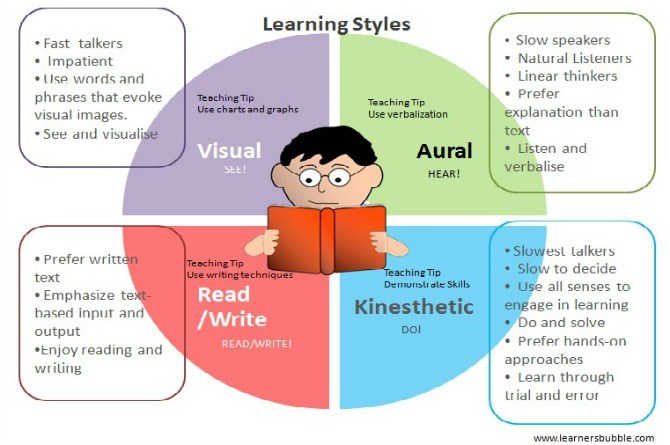
Effective Teaching Strategies
Self-directed learning is a type of instructional strategy where students take charge of their learning process. This lesson will discuss components, benefits, and teaching strategies of self
Definition of Cooperative Learning. Cooperative learning is a teaching method where students of mixed levels of ability are arranged into groups and rewarded according to the group’s success
2.3. Learning strategies A typical characteristic of self-regulated learners is that they use learning strategies to enhance their learning. Alexander, Graham and Harris (1998) described the learning strategy as a form of procedural knowledge: the ‘how to’ knowledge. Learning strategies facilitate learning and enhance performance. In other
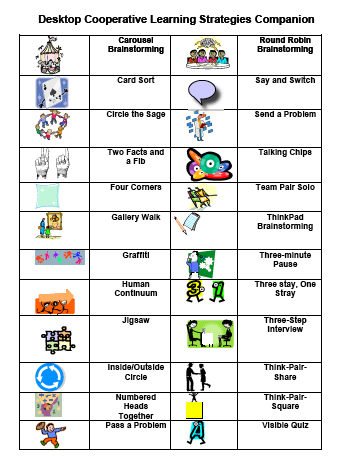
Language learning styles and strategies 275 8. L2 use strategies In Cohen’s article in this issue, as well as in a relatively recent book (Co-hen 1998), he distinguishes between L2 learning strategies and L2 use strate- gies.HedefinesL2use strategies as conscious techniques employed after L2 learning has occurred, when the material is accessible for communicative use.
10 Types of Learning Strategies with Advantages and Limitations by Laura A. Samson 1. Teacher Centered Strategies 1.1. Strategies used when utilizing technology, media, and materials. 2. 5- Discussion Learning Strategy 2.1. Advantages. 2.1.1. 1. This can give students a way to think about what is talked about and make a connection to what they
vocabulary learning strategies such as semantic context, keyword method, dictionary work, grouping and semantic mapping could enhance the knowledge of vocabulary learning and improve ability of how to acquire vocabulary effectively. In attempting to present vocabulary-learning-strategy instruction into a foreign language classroom, research
Received 15 November 2013 Volume 3, Number 2, 2013 3. kötet, 2. szám, 2013 DIDACTIC TEACHING STRATEGIES FOR SUCCESSFUL LEARNING Szőke-Milinte Enikő Abstract: The success of teaching-learning is defined by the mutual interaction of a number of factors, one of the most important being the didactic strategy employed by the teacher.
Learning is the process of acquiring new, or modifying existing, knowledge, behaviors, skills, values, or preferences. The ability to learn is possessed by humans, animals, and some machines; there is also evidence for some kind of learning in certain plants. Some learning is immediate, induced by a single event (e.g. being burned by a hot stove), but much skill and knowledge accumulates from
The definition of a teaching strategy is the principles and methods of teaching. Teaching strategies vary according to the grade level and subject being taught. The most common teaching strategies are: direct instruction, indirect instruction, interactive instruction, independent study and experimental learning.
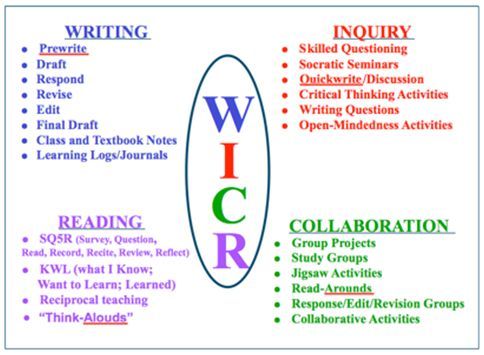
learning strategies more frequently than they did six months ago, and that there was more consistency between beliefs and strategies at the end of the course. It was also found that many vocabulary learning strategies correlated significantly with passive vocabulary size (positively) and with the percentage of active vocabulary at the K1
learning is his or her use of learning strategies. Learning Strategies as a Key to Student Success nancy protheroe and suzanne clarke. 34 Principal n November/December 2008 Franklin Hammond/images.com Schumaker and Deshler (2006) define a learning strategy as “an individ-ual’s approach to a task. It includes how a person thinks and acts when plan-ning, executing, and evaluating per
The Importance of Learning Strategies in ELT 1. The Importance of Learning Strategies in ELT Sandra J. Briggs TESOL Past President 2008-2009 sjbtbf@earthlink.net 2. Learning strategies are powerful. 3. They help language learners become independent learners. 4. They help language learners make the most of the English they have. 5. I. Introduction
definition of vocabulary, and then presents some L2 vocabulary learning strategies. 2.1 Word meaning theory When learning the meaning of a word, most learners may find it quite difficult.
Assessment of learning refers to strategies designed to confirm what students know, demonstrate whether or not they have met curriculum outcomes or the goals of their individualized programs, or to certify proficiency and make decisions about students’ future programs or placements. It is designed to provide evidence of achievement to parents, other educators, the students themselves, and
2 Teaching and Learning Strategies Strategy Teaching and Learning Strategy Definition and Examples Direct Instruction The Direct instruction strategy is highly teacher-directed and is among the most commonly used. This strategy is effective for providing information or developing step-by-step skills. It also works well for introducing other
70/ Instructional Strategies Health and Life Skills Guide to Implementation (K–9) 2002 ©Alberta Learning, Alberta, Canada • Reporter—Reports on the group’s work to the rest of the class. • Encourager—Encourages everyone in the group to contribute and offers positive feedback on ideas. • Materials manager—Gathers the material necessary to complete
His e-book was germinated in the workshop on “Effective Teaching Strategies for Junior Faculty” sponsored by the AEJMC’s Committee on Teaching at the AEJMC conference in Denver. With lively discussions and a mentor meet-up, this interactive workshop featured proven strategies for e ffective teaching and developing mentoring relationships.
Learning Strategies as a Key to Student Success
Overview of teaching and learning strategies The strategies described in this section of the resource represent well-recognised and effective teaching practices for early adolescence education.
Definition Of Teaching Strategies Pdf Co-Teaching Strategies & Examples. Strategy. Definition/Example. One Teach. One teacher has primary responsibility while the other gathers specific. This page features a range of online resources that define inclusive teaching and Framework and Strategies for Inclusive Teaching: This pdf provides specific.
to select teaching strategies and learning activities that support multiple language domains. The active teaching strategies and learning activities listed at the end of this chapter in Question 9.5 offer several multiple-domain examples. Here is an example of a multiple-domain health education learning
The purpose of this article is to explore a model of learning that proposes that various learning strategies are powerful at certain stages in the learning cycle. The model describes three inputs
Learning Exercises. References on active and cooperative learning are provided at the end of the material. Although some of the activities are duplicates of those included on other lists of resource references, the explanations given here help clarify their use. 40 Active Learning Strategies for Active Students, from the “Teaching Community,
Psychology Definition of LEARNING STRATEGY: a strategy used primarily during the process of learning such as forming a mental image of a process.
Define strategies. strategies synonyms, strategies pronunciation, strategies translation, English dictionary definition of strategies. n. pl. strat·e·gies 1. a. The science and art of using all the forces of a nation to execute approved plans as effectively as possible during peace or war….
Effective Strategies for Self-regulated Learning A Meta
Strategic Learning in the Classroom I feel like a bottle of ginger ale—I need the fizzle to settle before I can do what I need to do. —Chris, 5th grader My mind was like a cloud of gas of different little molecules, speeding around, colliding with each other with no structure. The strategies I
Types of learning? A pedagogic hypothesis put to the test The learning type theory maintains that the (individual) learning performance of pupils is enhanced by taking into consideration the different “channels of perception”. This theory has become largely independent of its author Frederic Vester. It is being widely disseminated through
Learning: “Assessment for learning occurs throughout the learning process. It is interactive, with teachers: • aligning instruction • identifying particular learning needs of students or groups • selecting and adapting materials and resources • creating differentiated teaching strategies and learning opportunities for helping individual
their students; and (4) to review best practices in assessing metacognition. Definition of Metacognition . John Flavell originally coined the term metacognition in the late 1970s to mean “cognition about cognitive phenomena,” or more simply “thinking about thinking” (Flavell, 1979, p. 906). Subsequent development and use of the term
LEARNING STYLES AND STRATEGIES 4 To perform well on assignments or when testing, Active Learners might use the following strategies: Role play the exam situation in a private area To learn a sequence of steps, make 3’x 5′ flashcards for each step. Arrange the cards on a table top to represent the correct sequence. Put words, symbols, or
Types of learning? OECD
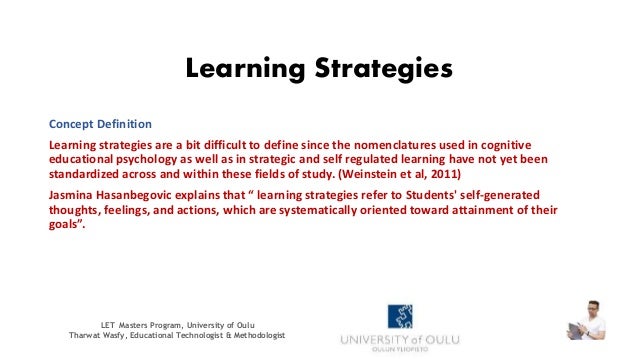
Strategic Learning in the Classroom PRO-ED
Learning strategies refer to a set of tactics that people use in order to gain control over their own learning process. Nowadays, enhancing strategies in second or foreign language classrooms is
Learning strategies a synthesis and conceptual model

Learning Strategies for Vocabulary Development
Definition Of Teaching Strategies Pdf WordPress.com
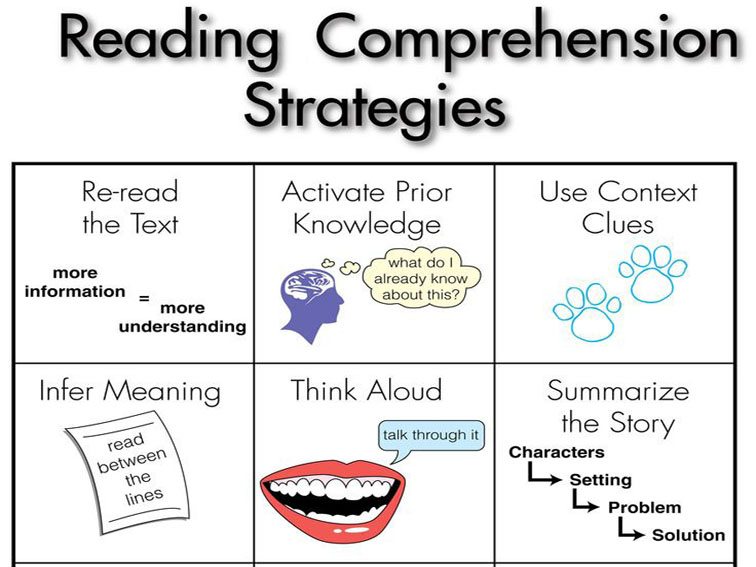

Learning Wikipedia
LEARNING STRATEGIES
(PDF) Learning Strategies in Second Language Acquisition

Teaching and Learning Strategies
Vocabulary Acquisition through Direct and Indirect